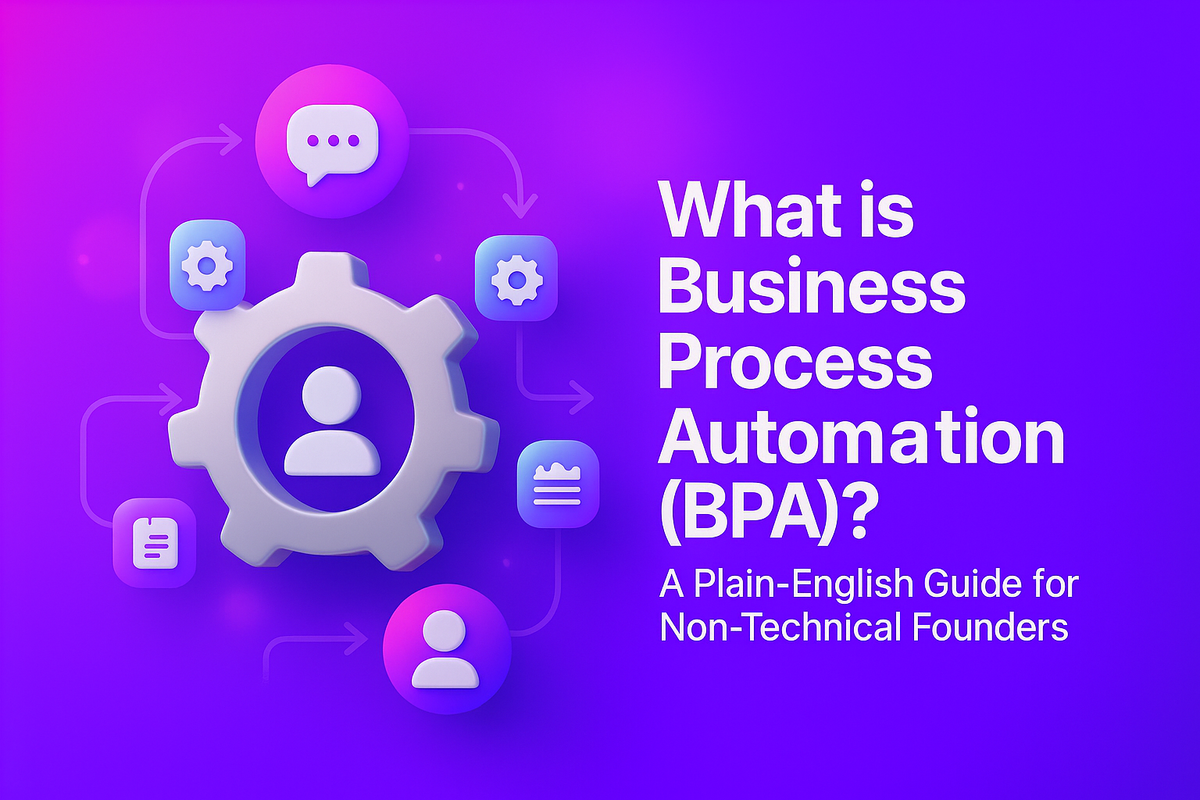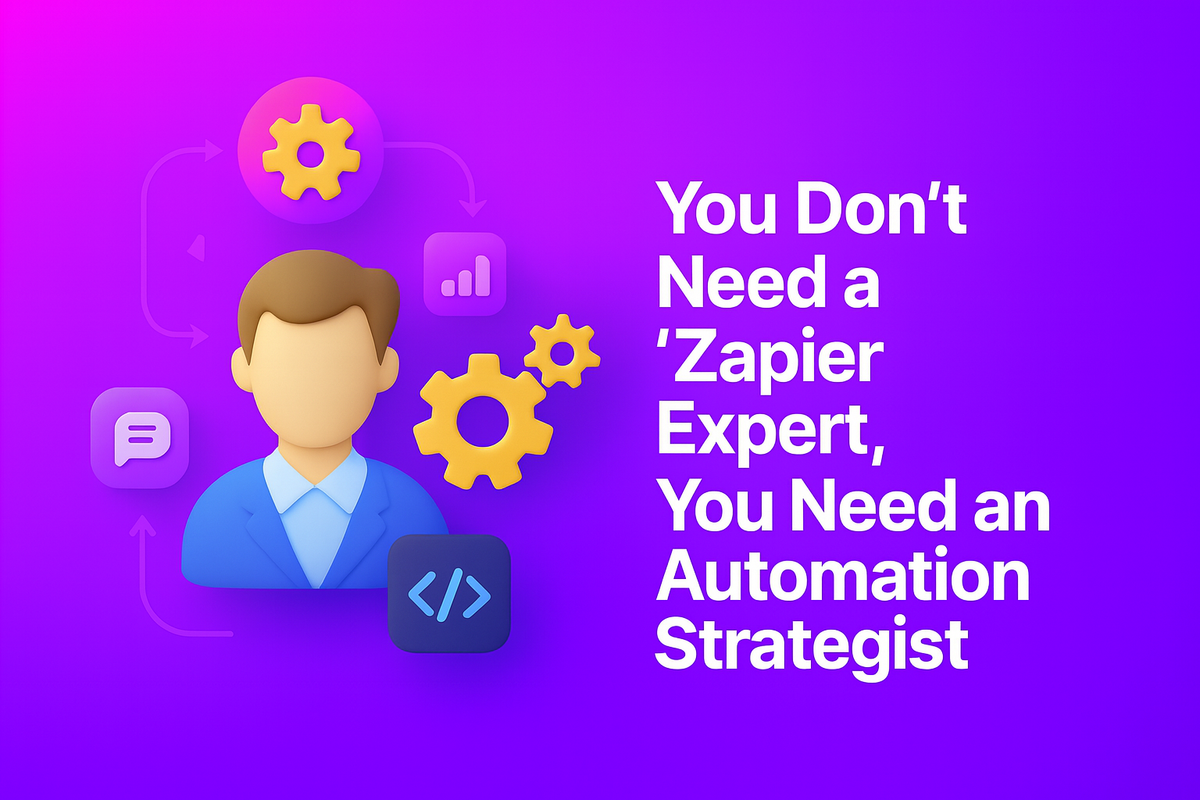
Every business has a natural rhythm, a flow of work that moves from one task to the next, from a new lead to a happy customer, from a supplier invoice to a paid bill. When this flow is smooth, your business feels energetic, productive, and poised for growth. But when it's clogged, it feels like you're wading through mud—working harder than ever but making little progress.
This "stuck" feeling is almost always caused by a bottleneck.
A bottleneck is any point in a process where the demand for a resource is greater than its capacity, causing work to pile up and wait. It's the single overloaded employee, the outdated piece of software, or the inefficient manual step that slows everything else down. These bottlenecks are the silent killers of productivity, employee morale, and, ultimately, your company's ability to scale.
The Symptoms Are Easy to Spot
- Perpetually missed deadlines
- Frustrated staff pointing fingers at other departments
- Customer complaints about delays
- A general sense that the business has hit a growth ceiling
The Good News
You can fix it. Eliminating bottlenecks isn't a dark art; it's a skill. This guide provides a practical, four-step framework that any SME can use to systematically identify, analyze, and eliminate the bottlenecks that are holding your business back.
Your Framework for a Freer-Flowing Business: D-M-A-I
To bring order to the chaos, you need a simple, repeatable method. We'll use a four-step framework: Define, Measure, Analyze, and Improve (DMAI). This approach will guide you from a vague feeling of inefficiency to a specific, actionable solution.
The DMAI Framework
- Define & Map: Making the invisible process visible
- Measure & Identify: Using data to find the exact location of the clog
- Analyze & Diagnose: Understanding the root cause of the slowdown
- Improve & Automate: Implementing a lasting solution
Step 1: Define & Map - You Can't Fix What You Can't See
The first and most critical step is to get a clear, honest picture of how a process actually works—not how it's written in a manual or how you think it works. The goal is to make the invisible flow of work visible to everyone.
How to Get Started:
Choose One High-Impact Process
Don't try to boil the ocean. Start with a single process that is either critical to your business (like order fulfillment) or is a known source of pain (like new client onboarding).
Assemble the Real Experts
Gather the people who perform the tasks within that process every single day. Their ground-level insights are more valuable than any executive's assumptions. This is a collaborative effort, not a top-down directive.
Get Visual - Map It Out
The best way to understand a process is to draw it. Grab a whiteboard, a stack of sticky notes, or use a simple online tool like Miro or Lucidchart. Start at the very beginning (the trigger) and map every single step, handoff, and decision point until you reach the final outcome.
For each step, note:
- Who is responsible
- What tools or software they use
- What information they need to complete the step
The Output
You will have a visual process map. For many businesses, this exercise alone is a revelation. You'll immediately spot redundancies (e.g., "Why are we entering the same data in three different systems?"), unnecessary steps ("We print the digital invoice only to scan it back in later"), and confusing handoffs. This map is your foundational document for the next steps.
Step 2: Measure & Identify - Following the Data to the Bottleneck
With your process map in hand, you can now move from anecdotal feelings to objective data. The goal of this step is to pinpoint the exact stage in the workflow where things are slowing down. To do this, you need to measure a few key metrics.
What to Measure:
Key Metrics
- Cycle Time: How long does it take to actively complete a single step in the process? (e.g., "It takes 15 minutes to manually enter an invoice.")
- Wait Time (or Queue Time): How long does a task sit idle between steps? (e.g., "The invoice sits in the manager's inbox for an average of 2 days before being approved.") This is where the most significant bottlenecks often hide.
- Throughput: How many tasks are completed in a specific period (e.g., "We process 20 orders per day.")? A bottleneck will always limit your maximum throughput.
- Error Rate: What percentage of tasks at a certain step need to be redone or corrected? High error rates create rework, which is a major source of delay.
How to Collect the Data:
You don't need complex software for this. For one or two weeks, you can use a simple shared spreadsheet. Ask the team involved in the process to log when they receive a task and when they complete it. This simple data will be enough to calculate the average cycle times and, more importantly, the wait times.
Finding the Bottleneck
Look at your data. The bottleneck is the step with the longest cycle time or the step that has the longest wait time preceding it. Where is the work piling up? If tasks are completed quickly at Step 3 but then wait for hours or days before Step 4 can begin, then Step 4 is your bottleneck.
Step 3: Analyze & Diagnose - Uncovering the Root Cause
You've now found where the clog is. The next logical question is why it's happening. It's tempting to jump to conclusions ("The manager is just too slow!"), but the real cause is often systemic, not personal.
A powerful technique for digging deeper is the "5 Whys." By repeatedly asking "Why?", you can peel back the layers of symptoms to find the true root cause.
Real-World Example: The 5 Whys in Action
The data from Step 2 shows a major bottleneck at the "Final Invoice Approval" stage.
- Why is there a delay in getting invoices approved?
Answer: Because the final approval from the Managing Director is slow. - Why is her approval slow?
Answer: Because she is very busy and has a large pile of invoices to review every week. - Why does she have to review so many invoices?
Answer: Because she is required to sign off on every single payment the company makes, even small, recurring ones. - Why is she required to sign off on every payment?
Answer: Because there is no formal system in place to differentiate between low-risk, routine payments and large, strategic expenditures. - Why is there no such system in place?
Answer: Because the current process was created when the company was much smaller and hasn't been updated as the company has grown.
The Root Cause: The bottleneck isn't a "slow director." It's an outdated approval process that doesn't scale. This insight is critical because it points to a systemic solution, not a personnel issue.
Step 4: Improve & Automate - Designing a Freer-Flowing Process
Now that you understand the root cause, you can design an effective solution. There is a hierarchy of improvements, from simple process changes to powerful technological automation.
Standardize & Eliminate
The simplest fixes are often the most powerful. Create a clear, documented Standard Operating Procedure (SOP) so everyone executes the process the same way. Look at your process map and ask: "Are there any steps we can eliminate entirely?" (e.g., stop printing digital documents).
Re-sequence & Redistribute
Can certain steps be done in parallel instead of one after the other? Can you redistribute the workload from the overburdened bottleneck resource? In our invoice example, the solution could be to create a new policy: "The Finance Manager can approve all invoices under €1,000. Only invoices above this amount need the Director's approval." This immediately removes 80% of the invoices from the director's desk, breaking the bottleneck.
Automate with Technology
This is the most powerful lever for eliminating bottlenecks permanently. Technology can perform tasks at a scale and speed that humans simply cannot match.
Automation Solutions
- Workflow Automation: Use tools like Zapier, Make.com, or Microsoft Power Automate to handle the handoffs between steps. Instead of an invoice sitting in an inbox, an automated workflow can instantly notify the approver, send reminders, and escalate if a decision isn't made within 24 hours.
- Intelligent Document Processing (IDP): To address our invoice example at its core, IDP software can read, understand, and extract all the data from the invoice automatically. This eliminates the manual data entry bottleneck that often precedes the approval step.
- Robotic Process Automation (RPA): For processes that involve moving data between older systems that don't have APIs, RPA "bots" can be programmed to mimic human actions—logging in, copying, and pasting data—to bridge the gap between your applications.
The Complete Solution
For our invoice example, a robust solution would combine these elements: an IDP system reads the invoice, a Workflow Automation rule checks the amount, and if it's under €1,000, it's automatically routed to the finance system. If it's over, the workflow routes it to the director for a one-click approval on their phone. The bottleneck isn't just eased; it's completely engineered out of the process.
Conclusion: From Fire-Fighting to Continuous Improvement
Improving your business processes is not a one-time project; it's a mindset and an ongoing cycle. The DMAI framework is a tool you can use again and again, for any process in your business.
By systematically identifying and eliminating bottlenecks, you do more than just speed things up. You build a more resilient, predictable, and scalable operation. You reduce costs, improve customer satisfaction, and create a less frustrating, more empowered work environment for your team. You stop fire-fighting the symptoms of inefficiency and start architecting a business built for smooth, sustainable growth.
Ready to Identify Your First Major Bottleneck?
Identifying your first major bottleneck is often the hardest part. If you need an expert eye to help you map your processes and uncover the hidden opportunities for efficiency and automation, get in touch. We specialize in turning clogged workflows into superhighways of productivity.


